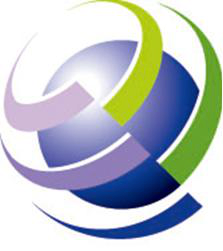ICIN 2009
Monday 26 October Pre-conference events
- Tutorial 1: Identity Management in IP Networks
- Tutorial 2: Web Technologies for Telecom
- Workshop: The Changing Landscape of Standardisation
09:00 – 12:30 Tutorial 1
Identity Management in IP Networks: Developing new services from the building blocks
Dr Igor Faynberg and Dr Hui-Lan Lu, (Alcatel-Lucent, USA)
This tutorial provides a detailed, hands-on, introduction to the technological foundation of identity management, addressing all major existing authentication mechanisms in the web and IMS. Then it moves on to demonstrating how to mix and match these blocks creatively to create new services spanning the web and telecom technologies.
Initially developed within Information Technologies, identity management (IdM) has evolved into a multidisciplinary subject, whose different aspects are studied in engineering, legal and social fields. In a nutshell, IdM deals with the life cycle of identities for authentication and authorization for access to resources. An essential side of it is protection of user privacy.
As far as telecommunications services are concerned, IdM is becoming a major enabler of new commerce applications (such as payment by phone) and integration of web and telecommunications services.
This tutorial explains, in practical detail, the state of the art concerning identity management. The tutorial assumes no prior knowledge of the subject, and systematically builds it up.
The tutorial starts by outlining the core security building blocks by
- Demystifying cryptography and explaining authentication mechanisms and protocols
- Explaining the public key infrastructure and electronic certificates, Kerberos, and smart-card-based mechanisms
- Addressing privacy issues, illustrated by email applications
- Demonstrating (based on the presenters' own experiences) how the above can be mixed and matched to create innovative services by interworking IMS and LTE security mechanisms with those prevalent in the web world.
12:30 – 14:00 Lunch
14:00 – 18:00 Tutorial 2
Web Technologies for Telecom
Rebecca Copeland (Huawei Technologies, UK); Roberto Minerva, (Telecom Italia, Italy); Frédéric Sciscione (Broadsoft, France); Sean O'Sullivan, (Dial2Do, Ireland)
This tutorial aims to explain the evolution of web technologies that allows blending data and telecom in advanced services. The tutorial will describe web technologies in detail, in particular the latest web 2.0 techniques and tools that facilitate real-time dialogues, mashups, information sharing and generic 'cloud' APIs. It will cover wider aspects, such as coping with web user identity, security, performance and charging in web applications and will give examples of websites utilising such technologies and combining them with telecom services to form attractive new services.
Frédéric Sciscione, Broadsoft
- What we mean by web2.0
- REST and RESTful principles, why they are so effective
- REST compared with SOAP
- Widgets: advantages and limitations
- Mashup and other web technologies: why they are so valuable
- The difference between web services and web2.0
- How is web2.0 integrated with Telecom services?
Roberto Minerva, Telecom Italia
- Security for web2.0
- Identity in web2.0
- The web API 'cloud' and standards, general APIs and 'Gadgets' e.g. Open Social
- How reliability and performance are achieved
- SaaS (Software), DaaS (Data) and PaaS (Platform), e.g. strikeiron ...
- How is data shared without breaching security and privacy?
- How data integrity for web2.0 can be assured
Sean OSullivan, Dial2Do
- What APIs are available (on websites, on devices or from carriers) for developers
- Working with currently existent APIs (consistency, variety, complexity)
- The technology that underpins successful services today
- What the SP needs to connect to a carrier, and how do SPs choose a carrier?
Rebecca Copeland, Huawei
- All: brainstorming to get service ideas that utilise web2.0
- Tutors' comments, evaluating: attractiveness, technical viability, chance of success, profitability
14:00 – 18:00 Workshop
The Changing Landscape of Standardisation
New directions and approaches for standardisation are becoming critical issues for service delivery over new communications networks.
New networks and new technologies are enabling new services and new opportunities. New approaches to standardisation are required to deliver on the promise of these opportunities.
The Changing Landscape of Standardisation brings together industry participants in a collegiate atmosphere to discuss new ways of approaching standardisation challenges in the communications industries as business models evolve to take advantage of new technologies.
This interactive workshop investigates the delivery of end-to-end solution specifications that are capable of responding to end user service demand. It then explores the challenges of creating a converged standards environment for future networks and the new 3.0 digital world.
| Workshop: The Changing Landscape of Standardisation | |
| Monday 26 October 14:00 – 16:00 |
Session 1: Mind the gaps |
| Key issues |
|
| Chairman and moderator | Robin Mersh, COO, Broadband Forum |
| Chairman's contribution |
Experiences in avoiding duplication of work, filling gaps and effective collaboration between organisations
Robin Mersh, COO, Broadband Forum |
| Contribution 1 |
Challenges in standardisation from an ETSI perspective Hermann Brand, Vice President, New Initiatives & Market Development, ETSI |
| Contribution 2 |
Viewpoints from an operator Philippe Calvet, Head of Home & Broadband Standards, France Telecom |
| Contribution 3 |
Standardisation issues for next generation IPTV services Chaesub Lee, visiting researcher, ETRI & Chairman, ITU-T Study Group 13 |
| Contribution 4 |
Challenges in standardisation from a DVB perspective Peter Siebert, Executive Director, DVB Project |
| Contribution 5 |
Experiences in developing interoperable end-to-end specifications Monika Gadhammar, Marketing Chair, Open IPTV Forum |
| 16:00 – 16:30 | Coffee break |
| Monday 26 October 16:30 – 18:00 | Session 2: Convergence challenges and future networks |
| Key issues |
|
| Contribution 1 |
ITU-T activities on future networks Marco Carugi, Vice-Chairman, ITU-T Study Group 13 |
| Contribution 2 |
Addressing the needs of the mobile 3.0 digital world Steve Bell, President, KeySo Global |
| Contribution 3 | Andrew Watson, Vice President & Technical Director, Object Management Group |
| Contribution 4 |
The OMA perspective on the Changing Landscape of Standardization Liliana Dinale, Ericsson R&D Canada & vice chair OMA Architecture, Open Mobile Alliance |
































